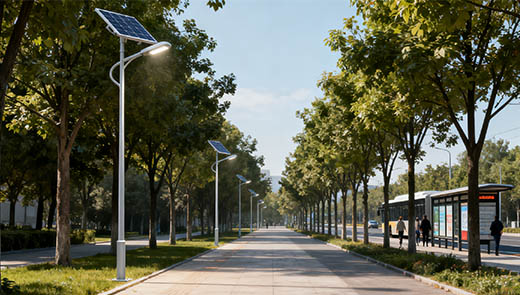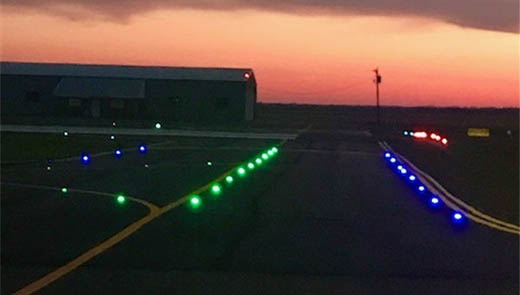How to Find the Brightest Solar Street Lights
In today's world, where green energy and sustainable development are being promoted, solar street lights have become a popular choice for urban streets, community roads, and rural lighting due to their energy-saving, environmentally friendly, and easy-to-install advantages. However, with the wide variety of solar street light products available on the market, how to select a product with sufficient brightness and suitability for one's own needs has become a challenge for many consumers and project planners. This article will provide a professional purchasing guide by addressing brightness measurement standards, different scenario requirements, and key product characteristics.
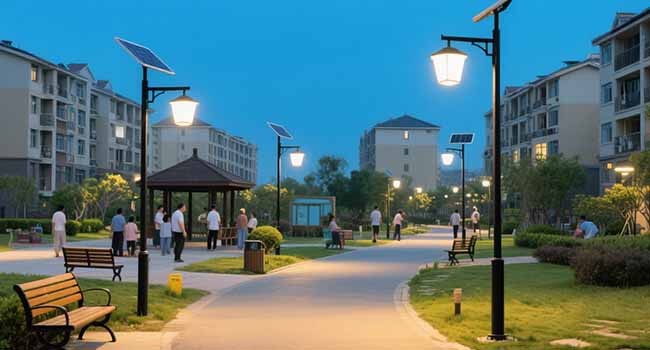
What Are Lumens?
Lumens (lm) is the unit used to measure the actual amount of light emitted by a light bulb, directly reflecting the total amount of visible light emitted by the light source into the surrounding space. Simply put, lumens = brightness; the higher the lumen value, the brighter the light emitted by the bulb. With the rapid development of LED technology, lumens have replaced traditional watts as the core metric for assessing brightness when selecting lighting products. When purchasing LED lighting fixtures, including solar street lights, you will notice that brightness specifications in product parameters are typically denoted in lumens.
What’s the Difference Between Lumens and Watts?
Different Definitions and Measurement Objects
Watts (W) is the unit of power used to measure the amount of electricity consumed by a light bulb, reflecting the energy consumed by the bulb per unit of time, which is directly related to monthly electricity bills. Not only lighting fixtures but also appliances such as microwaves, refrigerators, computers, and mobile phones use watts to measure energy consumption. Lumens, on the other hand, are the unit used to measure the actual amount of light emitted by a light bulb, directly indicating the total amount of visible light emitted by the light source.
Common Misconceptions
In the past, people often believed that the higher the wattage, the brighter the light bulb. However, with the widespread adoption of LED lights, this notion has been dispelled. LED lights can emit brighter light than traditional incandescent bulbs at lower wattages. For example, a traditional 100-watt incandescent bulb is roughly equivalent to an LED light emitting 1,600 lumens.
Impact on Purchasing Decisions
Today, to facilitate consumer selection, manufacturers label the lumen value on product packaging, allowing consumers to directly understand the actual brightness of the lighting fixture. Wattage is primarily used to measure energy consumption, and both metrics should be considered together to determine whether the lighting fixture meets specific needs. The common conversion relationship between wattage and lumens is shown in the table below:
|
Traditional Bulb Wattage |
Equivalent LED Lumen Output |
|
100 Watts |
1600 Lumens |
|
75 Watts |
1100 Lumens |
|
40 Watts |
450 Lumens |
Do More Lumens Mean a Brighter Light?
There is no doubt that the higher the lumen value, the brighter the light. However, when selecting solar street lights, one should not focus solely on the lumen value but also consider the wattage and lumen value together. A combination of low wattage and high lumen value indicates high energy efficiency, meeting lighting needs while saving electricity.
Take solar street lights as an example: they collect solar energy through solar panels, convert it into electricity, and store it in batteries for nighttime lighting. Choosing products with low wattage and high lumens not only extends battery life but also reduces overall usage costs, achieving both energy savings and efficient lighting.
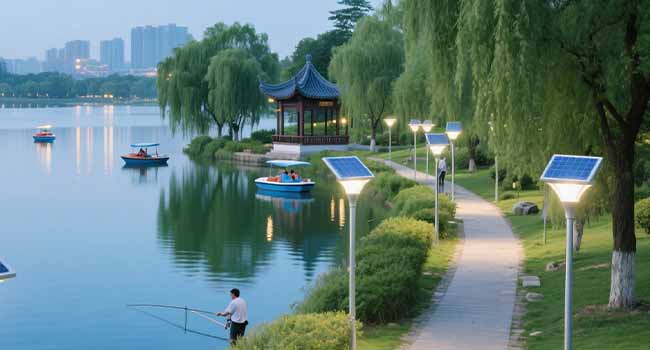
How Many Lumens Do You Need for Solar Street Lights?
The lumen requirements for solar street lights vary depending on the usage scenario. Below is a reference range and detailed analysis of lumen requirements for common scenarios:
Residential Area Streets
The primary purpose of lighting in residential area streets is to provide safety for residents during nighttime travel while avoiding overly bright lights that may disturb residents' rest. Generally, solar street lights with approximately 5,000 lumens are suitable. This brightness level clearly illuminates the road, allowing residents to see the road conditions and avoid potential hazards, while also avoiding light pollution. Additionally, residential area streets are typically narrower, and surrounding buildings provide some reflective illumination, so there is no need for excessively high lumen brightness.
Ordinary Urban Streets
Ordinary urban streets have relatively high pedestrian and vehicle traffic, so lighting requirements are higher than those for residential area streets. Solar street lights with 600–3,000 lumens can meet these needs. On streets with frequent commercial activity, sections near shops can have slightly higher lumen values to allow pedestrians to see storefronts and signage clearly; on quieter sections, lower lumen values can be used to balance energy efficiency and lighting effectiveness. Additionally, ordinary urban streets vary in length and width, so the lumen values must be determined in conjunction with the installation spacing of the Street lights to ensure uniform lighting across the entire street.
Highways and Busy Main Roads
Highways and busy main roads have high vehicle speeds, requiring extremely high brightness and illumination ranges from Street lights, necessitating solar Street lights with 6,000–12,000 lumens. High-lumen Street lights provide drivers with a clear and wide field of vision, enabling them to detect changes in road conditions, traffic signs, and vehicles ahead in advance, thereby effectively preventing traffic accidents. Furthermore, these sections typically lack additional auxiliary lighting facilities and rely entirely on Street light illumination, so sufficient brightness and sustained stable lighting performance must be guaranteed. Additionally, considering the extended lengths of highways and main roads, high-performance solar panels and large-capacity batteries must be installed to ensure the Street lights operate stably for extended periods at night.

Parks, Squares, and Other Open Areas
The lighting requirements for parks, squares, and other open areas are relatively complex, typically requiring solar Street lights with a luminous flux of 3,000 to 12,000 lumens based on the area size. In smaller parks primarily used for leisurely walks, Street lights with lower luminous flux values can create a warm and comfortable atmosphere; while larger squares or areas hosting events require higher lumen output Street lights to meet lighting needs during crowd gatherings or events. Additionally, landscape lighting in parks and squares is also important. Some Street lights may be equipped with colored lights or special lighting effects to enhance the aesthetic appeal and attractiveness of the area while meeting basic lighting requirements, but this must be designed and selected while ensuring the basic lumen brightness is maintained.
Courtyards, Alleys, and Other Smaller Areas
Lighting in courtyards, alleys, and other smaller areas prioritizes privacy and energy efficiency. Solar street lights with a luminous flux of 600–1,500 lumens are sufficient to meet these needs. In courtyards, street lights are primarily used to illuminate pathways and activity areas, making it convenient for residents to move around the courtyard at night. In alleys, lighting is intended to ensure pedestrian safety and prevent security risks such as theft. These areas have low foot traffic and relatively short lighting durations. Low-lumen Street lights can meet lighting needs while maximizing energy savings and reducing operational costs. Additionally, compact and aesthetically pleasing solar Street lights can blend seamlessly with the overall style of courtyards and alleys, serving a decorative function.
Other Factors Influencing the Lumen Requirements of Solar Street lights
Light bulb type: Different types of light bulbs have varying luminous efficiency. For example, LED lights have high luminous efficiency and consume less energy at the same lumen output; traditional incandescent bulbs have low luminous efficiency and high energy consumption.
Size of the illuminated space: Larger areas require higher total luminous flux, thus necessitating Street lights with higher lumen output.
Distance from other light sources: If the illuminated area is near other light sources, such as store lighting or building illumination, the lumen requirements for solar Street lights can be appropriately reduced.
Illumination duration: The longer the daily illumination time, the higher the energy-saving requirements for the lighting fixtures, necessitating a balanced consideration of lumen output and energy consumption.
Number of Street lights: Increasing the number of Street lights can reduce the lumen requirements per Street light, achieving more uniform lighting effects.
Light pole type: Factors such as the height and spacing of light poles affect the coverage range and lighting effects of light, thereby influencing lumen requirements.
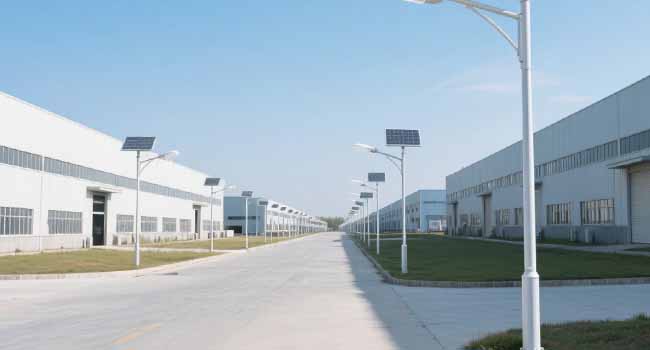
Other Features to Consider for Maximum Brightness
Adjustable Lighting Modes
Modern solar Street lights typically feature multiple adjustable lighting modes, such as motion-sensing mode and dimming mode. In motion-sensing mode, when people or vehicles are detected passing by, the Street light automatically switches from low brightness to high brightness. After people or vehicles leave, it returns to low brightness after a period of time, meeting lighting needs while effectively saving energy. Dimming mode allows users to manually adjust the brightness of the Street light according to different time periods and scenarios, increasing flexibility of use.
Weather Resistance and Durability
Solar street lights are exposed to outdoor conditions for extended periods and must have excellent waterproof and dust proof performance. The IP (Ingress Protection) rating measures a luminaire's ability to resist dust and water ingress, with IP66 being a higher rating. This indicates that the luminaire is completely dust-tight and can withstand strong water jets without being affected. Selecting solar street lights with a high IP protection rating ensures they function normally in rainy, snowy, or dusty environments, extending their service life and maintaining stable brightness output.
Wide Beam Angle
The beam angle determines the coverage area of the light. Narrow beam angle street lights have concentrated light beams with a long illumination distance but a small coverage area; wide beam angle street lights, on the other hand, evenly distribute light over a larger area. For example, a street light with a 170° wide beam angle provides more uniform and comprehensive lighting for large areas such as streets and squares compared to narrow beam angle products, avoiding lighting blind spots.
Motion Sensor Technology
Motion sensor technology is a key feature enabling solar Street lights to achieve both energy efficiency and safety objectives. When no activity is detected, the Street light remains in low-brightness or standby mode. Upon detecting human or vehicle movement, the sensor immediately activates high-brightness lighting, which automatically reverts to low brightness after the subject leaves the area. This intelligent control method ensures area safety while significantly reducing energy consumption and extending battery life, making it ideal for installation in areas requiring security lighting, such as driveways, backyards, and entrances.
To find the brightest solar street light, it is essential to consider key factors such as lumen output, wattage, usage scenarios, adjustable lighting modes, waterproof and dust proof performance, beam angle, and motion sensor functionality. As an energy-efficient and environmentally friendly lighting solution, solar street lights not only provide a bright lighting environment but also effectively reduce energy consumption and usage costs. We hope this article helps you make a more informed decision when selecting solar street lights, ensuring each light achieves optimal illumination performance.


